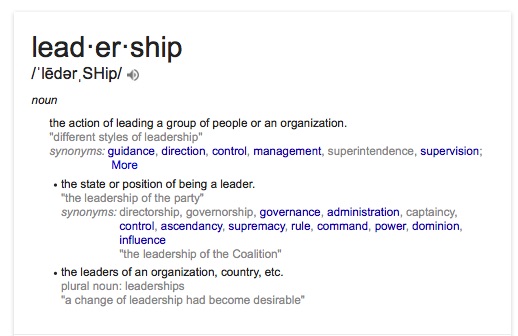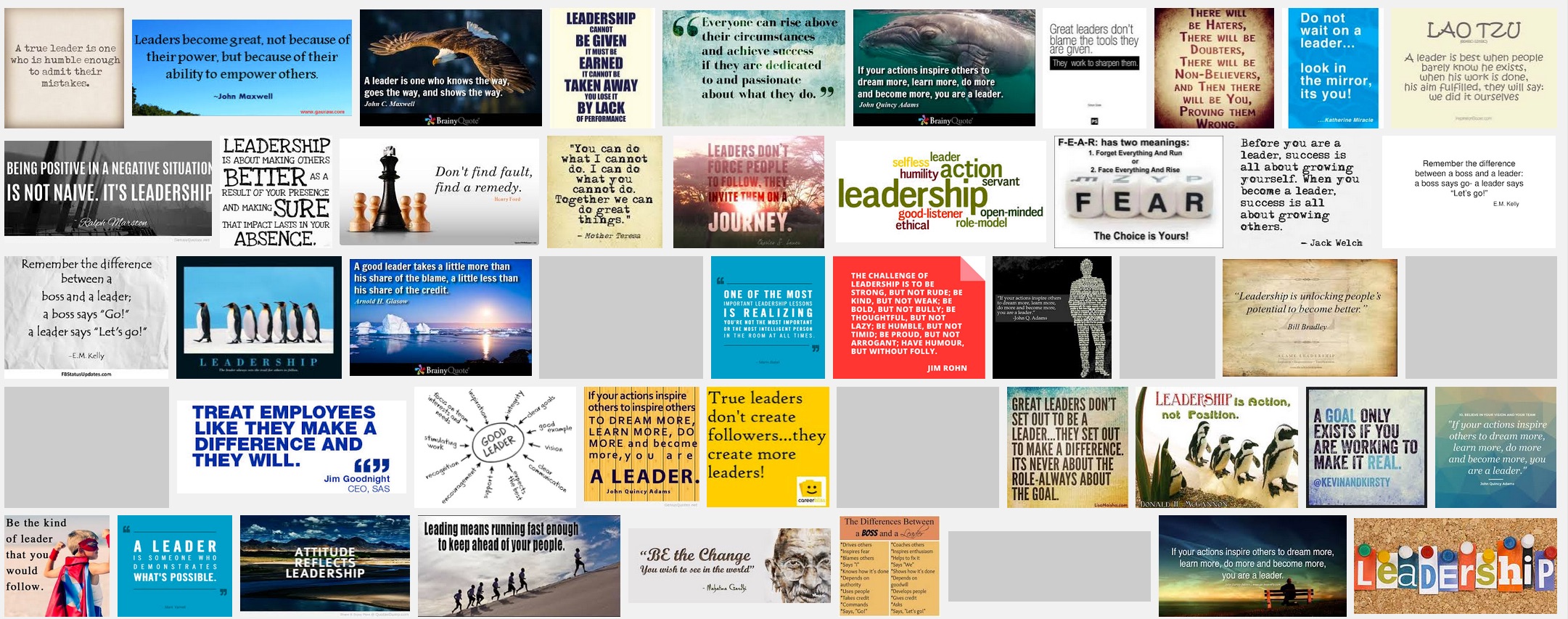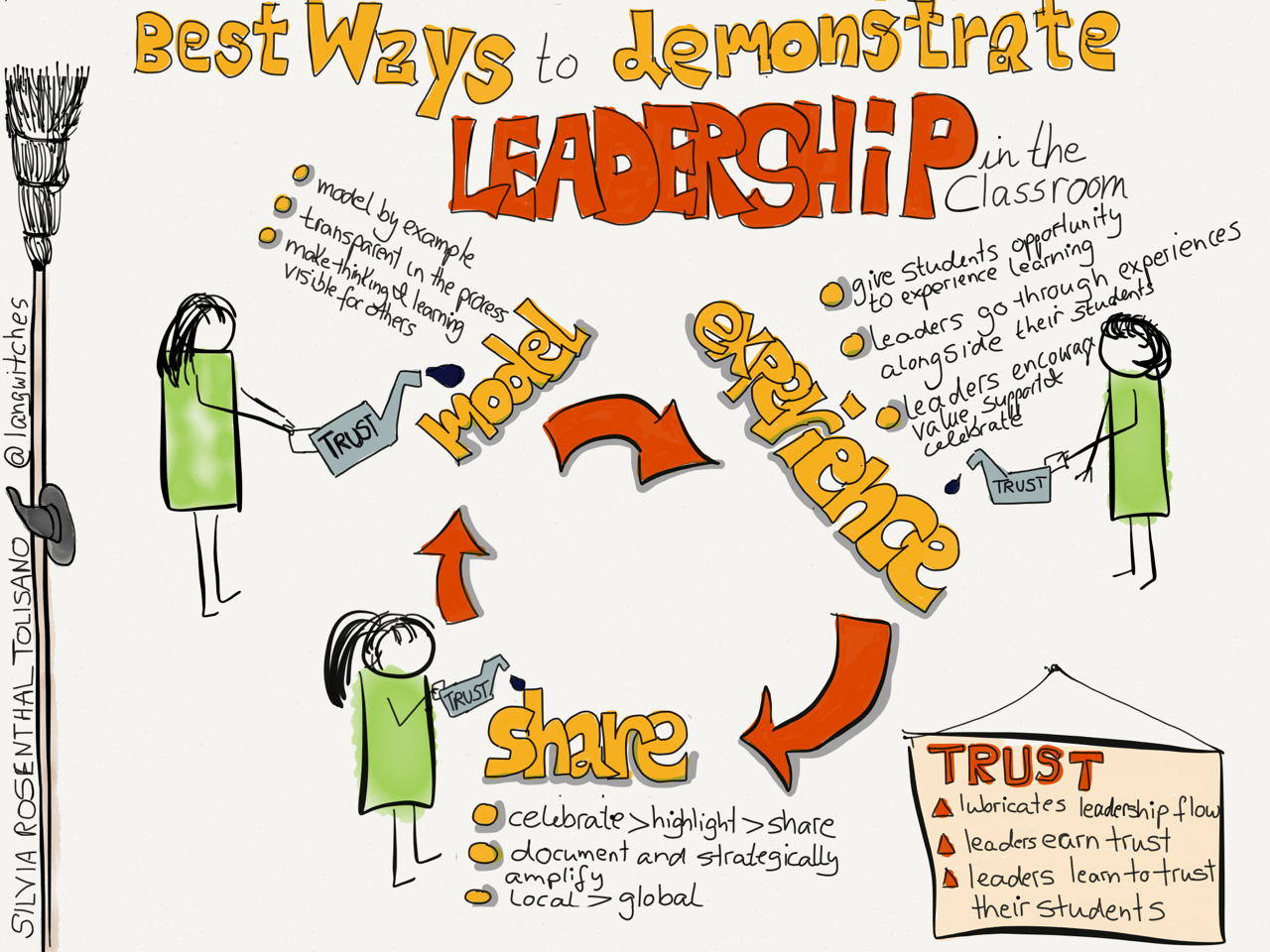What are the Best Ways a Teacher can Demonstrate Leadership in the Classroom?

As part of C.M Rubin’s monthly series in the Huffington post: The Global Search for Education: Our Top 12 Global Teacher Blogs, this is my third contribution. This month we are answering the following prompt: What are the best ways a teacher can demonstrate leadership in the classroom?
I started to poke a little around to get a better handle on the popular notion of WHAT leadership was perceived as:
I found a definition on Google:

I conducted a Google image search:

I got hundreds of quotes and points of view WHAT leadership is by searching for the #leadership hashtag on Twitter.



“Leadership is action, not a position” by Donald McGannon
I also looked at the results of an image search on Google and got visuals of how the concept of leadership might be represented. [ Oddly, the images below almost always portrait a leader who is somehow different (bigger size, different color, in a different position or pointing with a finger to something that has to be done]
Tools and ideas to transform education. Sign up below.

Taking these popular notions, quotes, points of view and visuals into account: How does leadership look like in the classroom? What are the best ways a teacher can demonstrate leadership in the classroom?

In the classroom, as a teacher, it boils down to a “Leadership Flow” for me, not one best way or another. That flow could be accomplished with the following four components:
- Model
- Experience
- Share
- Trust
Model:
A leader in the classroom models the type of behavior and learning they want to see and encourage in their students. They are transparent in their own learning process, they do not hide mistakes or failures, their make their thinking, learning and process visible for others to reconstruct and follow. Leaders model by example not by ” Do as I say”.
Experience:
A leader in the classroom gives students the opportunities to experience the learning. Leaders in the classroom don’t skip steps because it is easier, less time consuming and possibly more convenient. By the same token, leaders are ready to experience and embrace new situations, new skills, new learning opportunities alongside their students. Leaders put themselves in the position of learners and don’t continue to only draw on experiences from another lifetime (when they were young or from a pre-technology world). Leaders encourage, value, support and celebrate “sticking your neck out” in order to experience new paths.
Share:
A leader celebrates, highlights and shares their classroom learning community’s accomplishments. The leader takes on the responsibility of documenting and strategically amplifying through a variety of venues. This can range from face to face in-school sharing opportunities to district, national or international conferences as well as online social network platforms (Ex. blogs, Twitter, Pinterest, Diigo)
Trust:
A leader in the classroom is always working on establishing and strengthening trust as an integral component of that leadership flow. Trust is the component that “lubricates” the movement of the flow. Leaders always seek and take advantage of opportunities to gain trust but also learn to trust their students.
cross posted at langwitches.org/blog
Silvia Tolisano is a Curriculum21 faculty member, author of the book Digital Storytelling Tools for Educators and founder of the Around the World with 80 Schools project. Read more at http://langwitches.org/blog.
